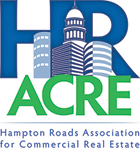
■ Leadership
Black represents primary structure. In architectural drawings, the heaviest line weights identify the elements that lead the building: structural walls, major boundaries, and controlling geometry. This aligns with Leadership because leadership provides direction, stability, and the framework others follow. Black anchors the logo the same way leadership anchors our practice.
■ Collaboration
Gray reflects process. It is the color of ideas, markups, consultant overlays, and represents the continuous development. This symbolizes collaboration because is it where disciplines integrate and the project becomes cohesive. Gray symbolizes the iterative nature of teamwork that strengthens every design.
■ Vision
Blue represents the conceptual field. It connects to blueprint tradition, early-phase diagrams, and future-focused planning. Vision defines possibility; It is the firm’s ability to think forward, imagine solutions, and design for quality of life through the entire process.
■ Integrity
White functions as the corridor. In architectural documentation, white space is what makes drawings readable, prevents collisions, and keeps structure, notes, and details aligned. White symbolizes Integrity because integrity is what connects and holds every value together. It is the corridor of clarity that ensures leadership, collaboration, and vision operate as one coherent system.
■ TS3
TS3 represents Thomas Smith the Third, acknowledging the leadership legacy and responsibility that continues through the identity of the firm. It reflects a lineage of accountability, discipline, and stewardship passed forward into the next generation of practice.
■ Architects
This defines the professional discipline and scope. Architects are legally bound to protect the health, safety, and welfare of the public. Including ‘architects’ reinforces that the firm is not only creative, but operates with rigorous standards and technical expertise.
■ PC
Professional Corporation – PC establishes the formal legal structure of the firm. It reflects regulatory compliance, state licensure, and the accountability required to practice architecture at a professional level. This reinforces the firm’s responsibility to clients, partners, and governing bodies.





